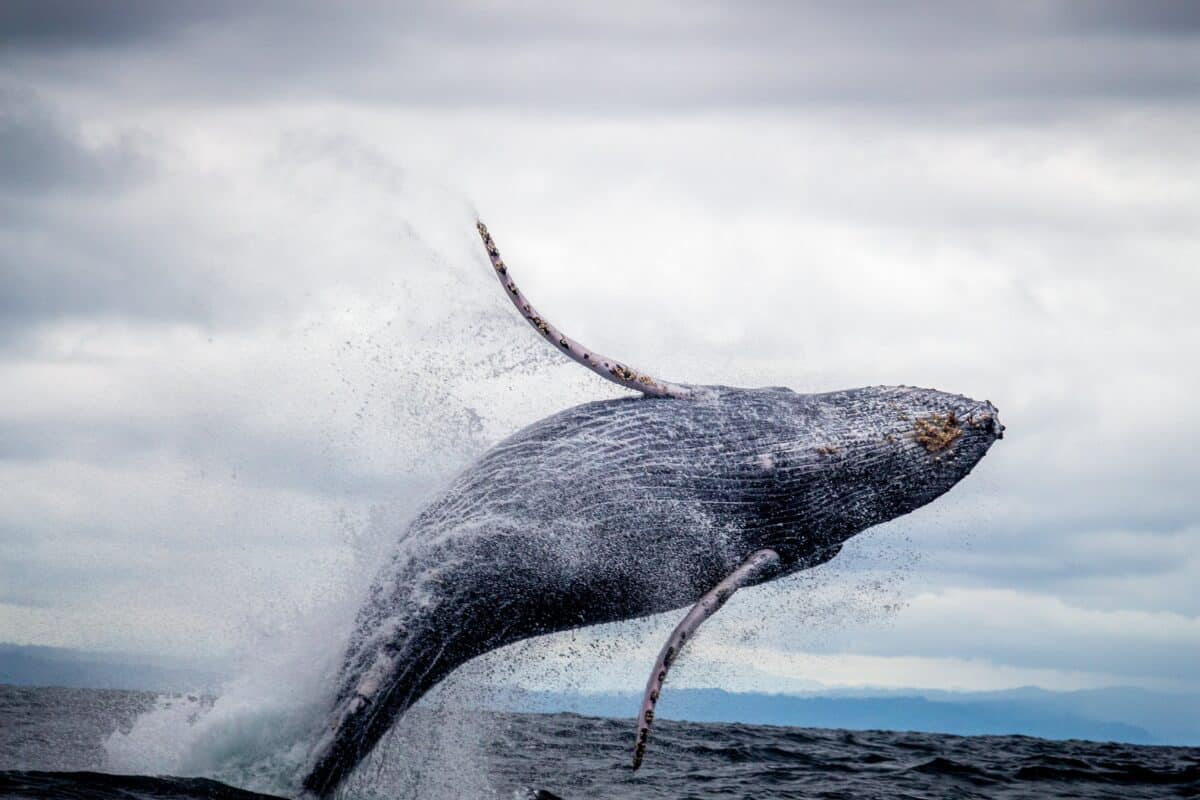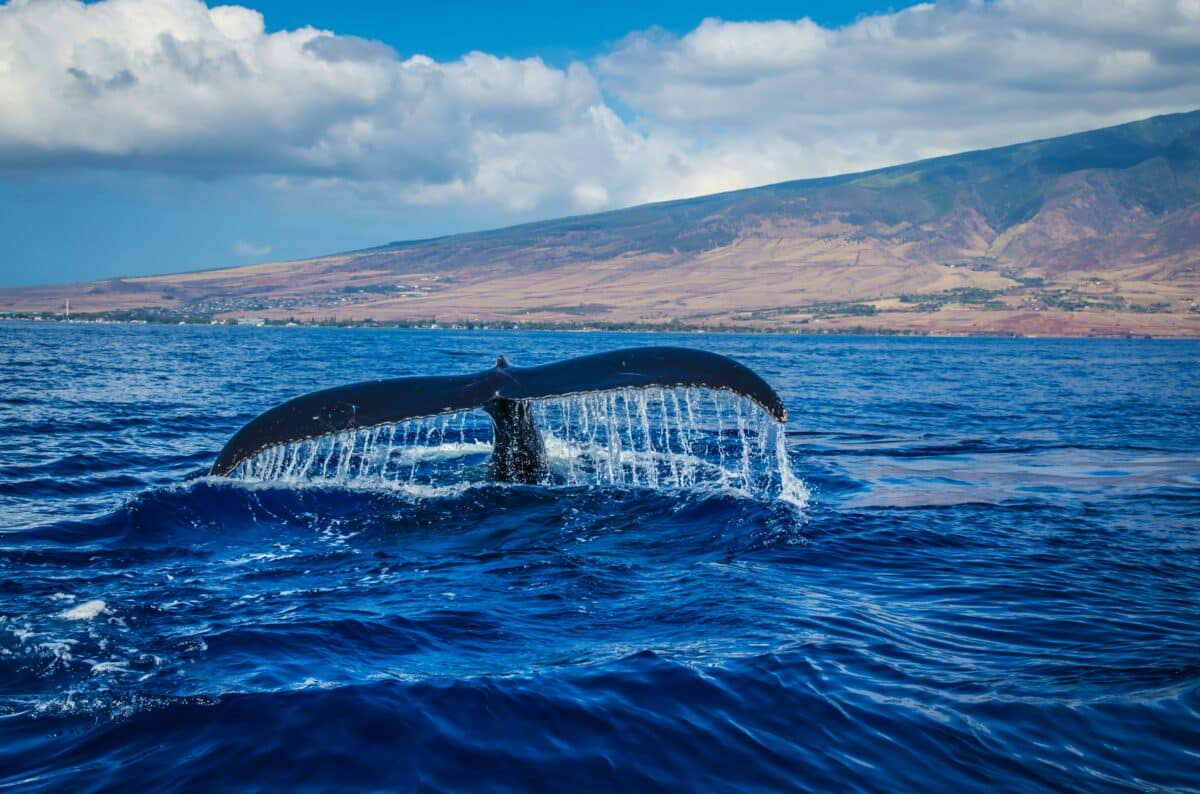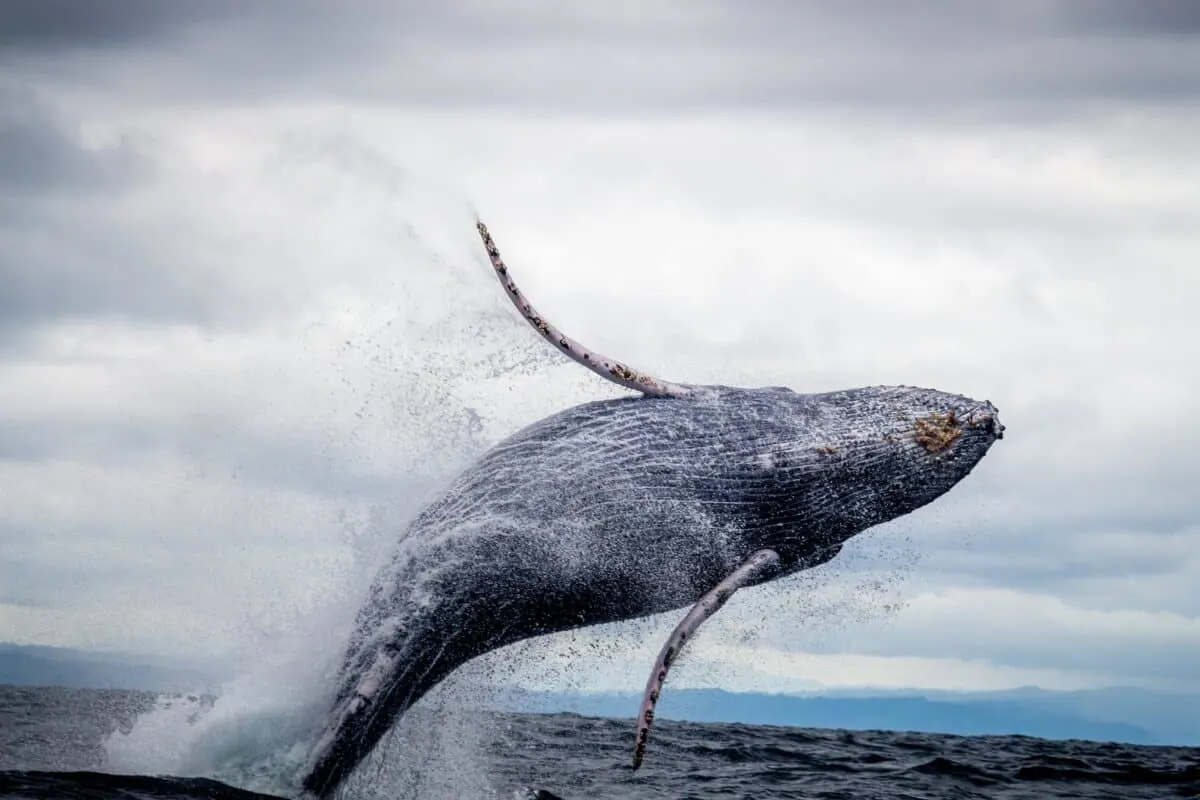Our expert-vetted content is grounded in current scientific publications, yet we acknowledge science’s ever-evolving nature. Read our full editorial and disclosure policy.
Introduction
The air-water interface signifies a major barrier for most organisms. However, despite the difficulty, some creatures manage to temporarily breach this interface for a number of reasons including hunting, escaping predators, regulating body temperatures, and parasite removal. One of the most remarkable examples of this behavior is observed in whales, and the phenomenon of whale breaching has captured the fascination of scientists and nature enthusiasts alike.

Whale breaching is a spectacular display in which a whale propels itself out of the water and crashes back down with tremendous force. This article will delve into the hows and whys of whale breaching behavior.
1. Whale Species That Breach

Almost all whales are known to breach, particularly the baleen whales. The most famous and frequent breachers are the humpback whales, right whales and sperm whales. The more uncommon baleen breachers include the gray, blue, minke, sei, Bryde’s and fin whales.
Apart from the northern bottlenose, beaked whales are also known to breach, except this behavior is termed ‘leaping’ for this family of whales. Examples of beaked whales that have been observed breaching are the Cuvier’s, Longman’s, and True’s whales.
2. Why Do Whales Breach?
Communication
Check out Why Do Humpback Whales Breach?
Scientists believe that breaching and other aerial behaviors may serve a communication function. These slapping sounds could be used as an effective aquatic mechanism for sending messages to other whales over long distances. The bigger the breach, the louder the sound and the further the message will travel. This is because sound travels faster underwater than it does on land and is therefore a more effective form of communication for animals that live underwater.
Scientists have inferred that the most aerially active species of whales are also the most social. Therefore, high levels of aerial activity such as breaching could be used to communicate among members of the same species.
Parasite Removal
Another proposed benefit of breaching is ectoparasite removal, especially among heavily-infested baleen whale species. The physical force generated during a breach can dislodge parasites attached to a whale’s skin. This suggests that breaching might have evolved as a means of maintaining hygiene and health for certain cetaceans as the heavily infested species seem to be the most frequent breachers.
Hunting
Experts have indicated that breaching and other aerial behaviors could help the whale to stun, scare, herd or trap their prey. While most breaches do not occur during feeding, this theory cannot be discounted.
Play and Other Reasons
Play is yet another possible reason behind breaching, particularly in young animals. Although not immediately biologically functional, play behaviour could help develop skills and abilities that are beneficial later in life. This notion is particularly relevant when considering the acrobatic and agile nature of breaches, which young whales often exhibit.
Other possible reasons for breaching and other aerial behaviors include stretching, looking above the water and inhaling water-free air in rough weather.
3. The Mechanics of a Breach

How Whales Breach
Whale breaching is an impressive display of power and agility, often categorized into two main styles: the “lateral breach” and the “vertical breach.” In a lateral breach, the whale propels itself horizontally out of the water, while a vertical breach involves the whale shooting vertically into the air, typically rotating during the ascent. Whales use their powerful tails to generate the immense force needed to breach that air-water interface.
Types of Breaching
Check out more about whale breaching behaviour
· Full Breach: When more than half of the whale’s body leaves the water.
· Half Breach: When half or less than half of the whale’s body leaves the water.
· Spinning Breach: While doing a full or half breach, the whale may spin clockwise or counterclockwise.
· Non-spinning Breach: While doing a full or half breach, the whale may not spin at all and simply land on its back or side.
· Chin-slap Breach: A vertical breach where the whale lands on its throat or belly.
· Tail Breach: When a whale lifts the lower half of its body and tail out of the water.

4. The Best Places to Witness Whale Breaching

1. Monterey Bay, California: Located along the Pacific coast, Monterey Bay is a renowned hotspot for whale watching. The best time to witness breaching here is during the summer months for humpback and blue whales. Gray whales can be seen during the winter months.
2. Husavik, Iceland: Iceland’s northern coast is famous for its rich marine life, and Husavik is known as the “Whale Watching Capital of Europe. Visitors can observe breaching humpback and sperm whales from May to September.
3. Hervey Bay, Australia: Between July and November, Hervey Bay becomes a hub for humpback whale watching. The sheltered waters provide an ideal environment for these giants to showcase their breaching behaviors.
4. Hermanus, South Africa: Nicknamed the “Whale Watching Capital of the World,” Hermanus offers exceptional opportunities to see southern right whales and humpback whales breaching from June to October.
5. Maui, Hawaii: Humpback whales migrate to the warm waters around Maui from December to April. Witnessing their spectacular breaches in this tropical paradise is a unique experience.
6. Baja California, Mexico: Gray whales frequent the waters off Baja California from December to April during their annual migration. Travelers can watch them breaching in the region’s lagoons and coastal areas.
5. Human Impact on Whale Behavior
Humans have a significant impact on whales and their breaching behaviors, often with negative consequences.
- Ship strikes: The most significant threat to whales occurs when shipping vessels collide with whales that are at or close to the surface. These accidents can cause injuries or fatalities for whales and damage to ships.
- Commercial fishing: Commercial fishing practices can lead to entanglement in fishing gear, a severe threat to whale populations.
- Noise pollution: Noise pollution from shipping traffic and underwater construction can disrupt whale communication, navigation and feeding – potentially altering their breaching patterns.
As breaching requires a high amount of energy, it can often be used to indicate an individual’s health, therefore, when a whale is injured or stressed due to human activities they may breach less frequently.
Conclusion
To conclude, it is vital for whales to be able to safely and successfully carry out their natural behavior. However, increases in shipping traffic and anthropogenic noise pollution can severely hamper their ability to do so. Conservation efforts are crucial to mitigate these impacts. Implementing stricter ship speed limits in whale habitats and creating whale-friendly shipping lanes can reduce the risk of ship strikes. Reducing underwater noise pollution and employing quieter vessel technologies are essential steps to protect whales. In terms of fishing, using whale-safe gear and implementing regulations to reduce bycatch is vital. Collaboration between fisheries and conservation groups can help find solutions to minimize the impact on whales.
To protect these gentle giants, it’s essential for individuals to support and promote these conservation efforts, raise awareness about the challenges whales face, and advocate for responsible practices in industries affecting whale populations. Our collective efforts can help ensure that whales remain safe and can carry out their natural behavior in the wild.
Read more about these fascinating animals:
- Why Whales Wear Kelp Hats? Scientists Have Uncovered The Truth Behind This Bizarre Behaviour
- A Heartwarming Encounter with a Friendly Whale
- The Grand Return of Killer Whales in False Bay
- Witness the Longest Blue Whale Ever Measured
- 100 Whales Released from Russian Whale Jail
- Watch a Beluga Whale Save a Woman’s Phone
- Huge Humpback Whale Surprises Kayaker
References
Kavanagh, A. S., Owen, K., Williamson, M. J., Blomberg, S. P., Noad, M. J., Goldizen, A. W., Kniest, E., Cato, D. H., and Dunlop, R. A. (2017). Evidence for the functions of surface-active behaviors in humpback whales (Megaptera novaeangliae). Marine Mammal Science, 33(1), 313–334. https://doi.org/10.1111/mms.12374
Segre, P. S., Potvin, J., Cade, D. E., Calambokidis, J., Di Clemente, J., Fish, F. E., Friedlaender, A. S., Gough, W. T., Kahane-Rapport, S. R., Oliveira, C., Parks, S. E., Penry, G. S., Simon, M., Stimpert, A. K., Wiley, D. N., Bierlich, K. C., Madsen, P. T., and Goldbogen, J. A. (2020). Energetic and physical limitations on the breaching performance of large whales. ELife, 9. https://doi.org/10.7554/ELIFE.51760
Würsig, B., and Whitehead, H. (2009). Aerial behavior. Encyclopedia of Marine Mammals, 5–11. https://doi.org/10.1016/B978-0-12-373553-9.00003-1
Join our Forum for free today!

- Shocking Survey Results of only 718 Snow Leopards Identified in India - July 18, 2024
- Do Octopuses Punch Fish For No Reason? - July 5, 2024
- Brave Farm Animals Save Chicken Friend FromHawk - June 30, 2024


